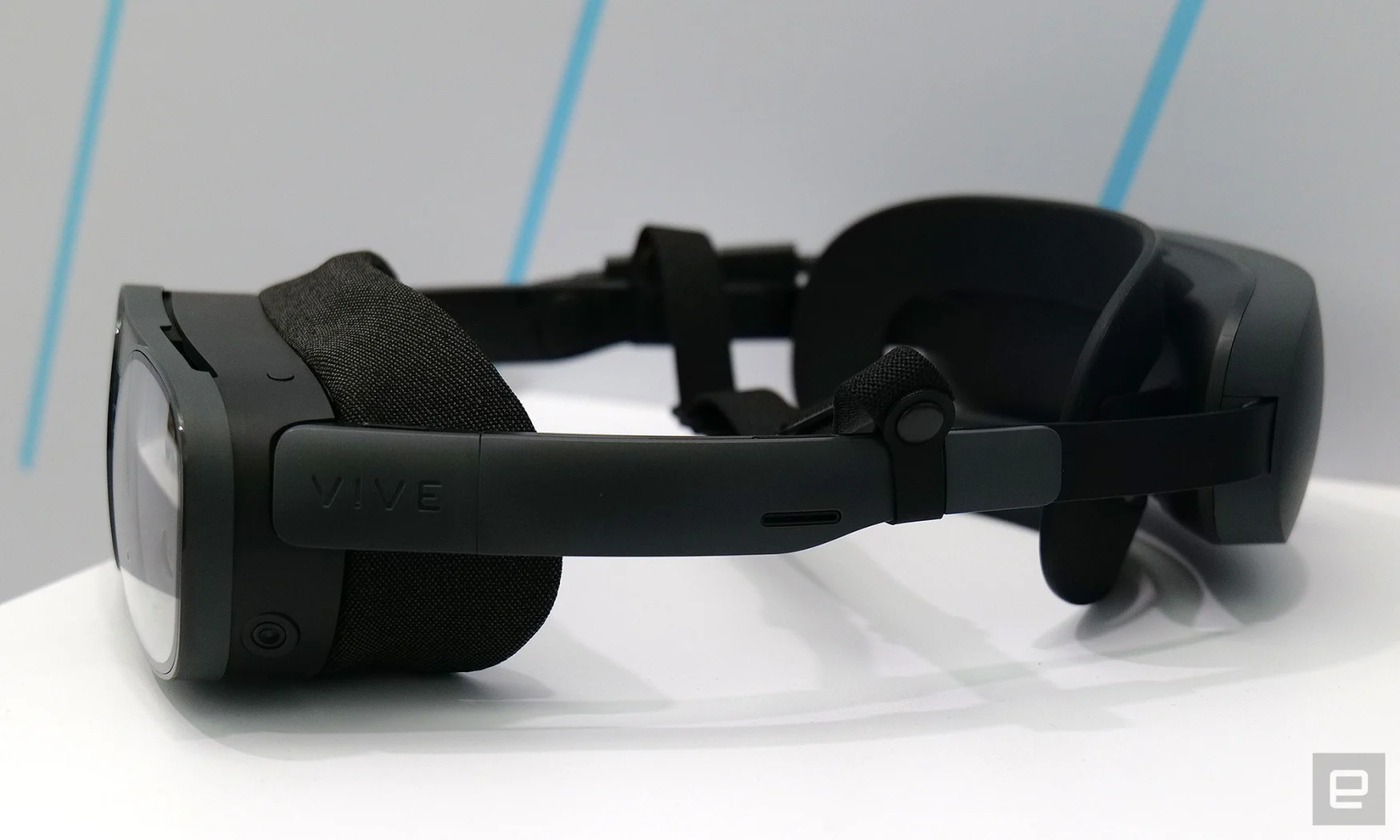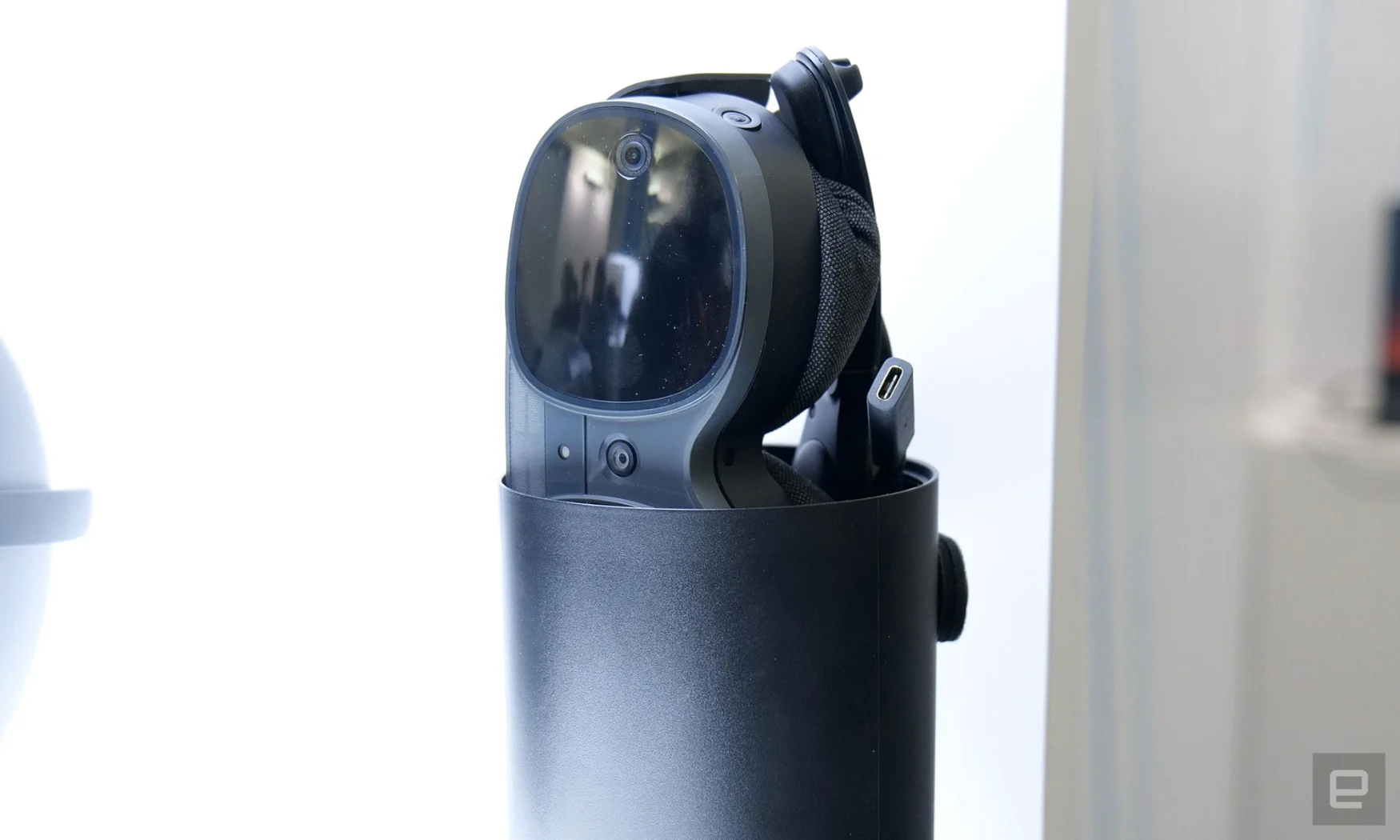Vive XR Elite hands-on: HTC’s more portable answer to the Meta Quest Pro
Late last year, Meta expanded the limits of consumer mixed reality when it released the Quest Pro. And now at CES 2023, HTC is hitting back with its own take on a flagship headset with the Vive XR Elite.
Right away, the XR Elite matches a number of the Quest Pro’s highlight specs including support for 2K resolution (1920 x 1920) to each eye, a 90Hz refresh rate and full standalone operation. However, weighing 625 grams (versus 722 for the Quest Pro) and with a more comfortable headband, the XR Elite does an even better job of delivering a breezy portable VR/AR experience. Heck, HTC included the ability to remove its battery and stuff the lens inside a relatively compact canister for traveling. That said you’ll still have to find room in a bag or somewhere else to stash its power pack.
But it was only after I got a chance to test HTC’s headset across a number of demos that I really started to appreciate how much has been packed inside such a small package. Like the Quest Pro, the XR Elite features built-in hand-tracking, so you can easily and intuitively use gesture controls in games. And with support for full-color passthrough, you don’t feel like you’re isolated in the lonely void of VR.
Also, despite HTC opting for a slightly older Qualcomm XR2 chip (compared to the XR2+ chip in the Quest Pro) I was able to play games like Hubris (which originally launched on PSVR) without the need for help from a computer. Thankfully, you still have the option of tethering to a desktop when you want to run PC-based games or pairing with your phone to watch videos.
Sam Rutherford/Engadget
Granted, the XR Elite’s controllers still have a ring around the top, which makes them a bit more unwieldy than Meta’s Touch Pro gamepads. But that’s a trade-off I can live with. The two major drawbacks of the XR Elite compared to the Quest Pro is its lack of sophisticated eye and face-tracking, though HTC says it’s working on modules that should address those shortcomings.
Unfortunately, despite its high points, the XR Elite also shares a lot of the same flaws as the Quest Pro. Sure, starting at $1,099, it’s a bit cheaper than Meta’s $1,500 rival. But that’s still prohibitively expensive for anyone that’s not a bleeding edge enthusiast. But the bigger issue is that with all these new features, it still feels like there’s a lack of content that can take advantage of the headset’s capabilities. Most of the games I played were demos meant to showcase specific features instead of full-fledged experiences.

Sam Rutherford/Engadget
There are some annoying quirks too. While I found the XR Elite more comfortable than the Quest Pro, I had a harder time dialing in my IPD (interpupillary distance) and getting the optics as tack sharp as Meta’s headset. On top of that, as a side effect to HTC’s quest for streamlined portability, there’s so little space between the XR Elite’s lenses and your eyes, there isn’t enough room for people to keep their glasses on while using it. HTC tried to combat this by including diopters that can account for certain levels of nearsightedness, but those settings only go down to -6. So while I don’t wear glasses myself, the headset is a much harder sell for those who do.

Sam Rutherford/Engadget
Ultimately, this means that as impressive as HTC’s smaller and more portable MR headset is on a technical level, it still doesn’t do enough to convert metaverse skeptics into willing users, or at least not yet. But just like the Quest Pro, in a way, HTC had to build the Vive XR Elite for that future to even have a chance of becoming reality, both now and long after the headset goes on sale sometime in late February.
All products recommended by Engadget are selected by our editorial team, independent of our parent company. Some of our stories include affiliate links. If you buy something through one of these links, we may earn an affiliate commission. All prices are correct at the time of publishing.
For all the latest Technology News Click Here
For the latest news and updates, follow us on Google News.
